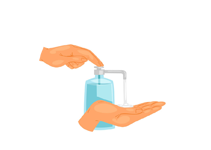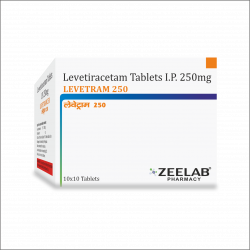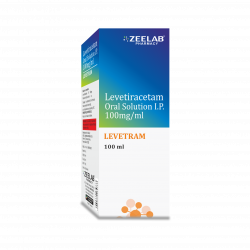Levetiracetam
Levetiracetam is a widely used anti-epileptic medication that helps control and prevent seizures in individuals with epilepsy. It is effective in managing partial-onset seizures, tonic-clonic seizures, and myoclonic seizures. This medication is often prescribed as a monotherapy or in combination with other anti-seizure drugs to enhance its effectiveness. Levetiracetam is well-tolerated and plays a significant role in improving the quality of life for patients with epilepsy.
Uses of Levetiracetam
- Treatment of partial-onset seizures in adults and children.
- Management of generalized tonic-clonic seizures.
- Control of myoclonic seizures in juvenile myoclonic epilepsy.
- Adjunctive therapy for seizures resistant to other treatments.
How Levetiracetam Works
Levetiracetam works by modulating the release of neurotransmitters in the brain. It binds to a protein called synaptic vesicle protein 2A (SV2A), which helps stabilize nerve activity and prevents abnormal electrical signals that cause seizures.
Benefits of Levetiracetam
- Provides effective control of various seizure types.
- Reduces the frequency and severity of seizures.
- Suitable for both adults and children with epilepsy.
- Less sedating compared to older anti-epileptic medications.
- Can be used as a monotherapy or in combination with other drugs.
How to Take Levetiracetam
Levetiracetam is typically taken twice daily, with or without food, as directed by your doctor. Swallow the tablets whole with water and follow the prescribed dosage strictly. For liquid formulations, measure the dose using the provided measuring device. Do not stop taking this medication abruptly without consulting your doctor, as it may increase seizure risk.
Types of Dosage Available
- Levetiracetam 250 mg tablets.
- Levetiracetam 500 mg tablets.
- Levetiracetam 750 mg tablets.
- Levetiracetam 1000 mg tablets.
- Levetiracetam oral solution.
Side Effects of Levetiracetam
- Common: Fatigue, dizziness, headache, and irritability.
- Moderate: Sleep disturbances, decreased appetite, and nausea.
- Severe: Mood swings, suicidal thoughts, and allergic reactions.
- Rare: Behavioral changes and severe skin rashes.
Safety Advice
- Inform your doctor about any medical conditions or allergies.
- Avoid alcohol while taking Levetiracetam, as it may increase side effects.
- Do not drive or operate heavy machinery if you experience dizziness or drowsiness.
- Regularly monitor your mood and report any significant changes to your doctor.
- Not recommended for use in pregnant or breastfeeding women without medical advice.
Frequently Asked Questions (FAQs)
Q: What is Levetiracetam used for?
A: Levetiracetam is used to control and prevent seizures in individuals with epilepsy, including partial-onset, tonic-clonic, and myoclonic seizures.
Q: Can Levetiracetam be used in children?
A: Yes, Levetiracetam is approved for use in children to treat various seizure types. The dosage depends on the child’s weight and age.
Q: How long does it take for Levetiracetam to work?
A: Levetiracetam begins working within a few days to control seizures, but full effects may take several weeks of consistent use.
Q: Are there any dietary restrictions while taking Levetiracetam?
A: There are no specific dietary restrictions, but avoid alcohol as it can increase the risk of side effects like dizziness and drowsiness.
Q: Can I stop taking Levetiracetam if my seizures are under control?
A: Do not stop taking Levetiracetam without consulting your doctor, as abrupt discontinuation can increase seizure risk.
Download India's most affordable pharmacy app
- Compare with medicine prices
- Save upto 90% on your medicine bills

Temperature Controlled storage and delivery

Regular Sanitization

Disinfected Packaging



















 Added!
Added!